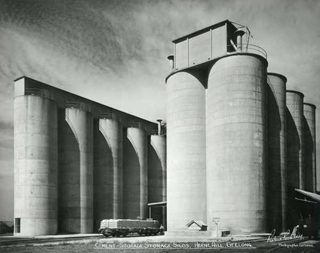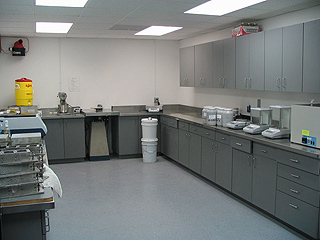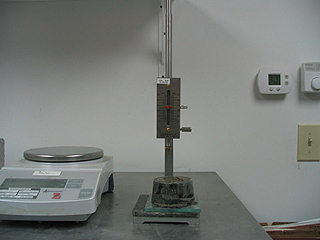About cement

Standardization
Public significance
As Portland cement is considered to be a product of particular importance for the stability and security of facilities he is subject of mandatory implementation of conformity assessment procedure, which consists of a series of measurements and activities. In Serbia the appropriate regulation is the Rulebook On Cement Quality (“Official Gazette of the RS No. 34/2013 and 44/2014 hereinafter referred to as Rulebook).
Types and composition of cements
The provisions of the Rulebook shall apply to the following cements:
1. Common Portland cement;
2. Sulfate resisting common cement;
3. White Portland cement;
4. Low heat common Portland cement;
5. Calcium aluminate cement.
According to Rulebook, common Portland cements are grouped into the following five varieties:
1. CEM I Portland cement;
2. CEM II Portland – composite cement;
3. CEM III Blastfurnace cement;
4. CEM IV Pozzolanic cement;
5. CEM V Composite cement.
The composition of the common Portland cements by individual types are shown in Table 1.
The composition of the Sulfate resisting common Portland cements by individual types are shown in Table 2.
Strength classes of cement
Cements are according to standard strength grouped into three classes, they being:
• Class 32,5
• Class 42,5
• Class 52,5
Three classes of early strength are defined for each class of standard strength:
• Class with ordinary early strength – N
• Class with high early strength – R
• Class with low early strength – L
Class L can be applied only on CEM III cements.
Additional perfomance of cement
Sulfate resisting common Portland cements are identified by the notation SR.
Low heat common Portland cements are identified by the notation LH.
Labeling
In technical, commercial and other documentation, as well as on bags, according to the Rulebook, cement are designated with the following mark : X Y (Z), where:
X designates the type of cement
Y designates the class of standard strength of cement
Z designates the additional (optional) label for sulfate resisting common cements and low heat common cements.
The link between labeling of types of cement according to the Rulebook and standards SRPS EN 197-1 and SRPS 14647 is shown in Table 3.
Conformity assesment
Characteristics of quality of common Portland cements for mandatory assessment of conformity are tested through the implementation of methods determined in the following standards:
| SRPS EN 196- 1:2017 | Methods of testing cement - Part 1: Determination of strength |
| SRPS EN 196-2:2015 | Methods of testing cement - Part 2: Chemical analysis of cement |
| SRPS EN 196-3:2017 | Methods of testing cement - Part 3: Determination of setting times and saundness |
| SRPS EN 196-5:2012 | Methods of testing cement - Part 5: Pozzolanicity test for pozzolanic cement |
| SRPS EN 196-6:2019 | Methods of testing cement – Part 6: Determination of fineness |
| SRPS EN 196-8:2011 | Methods of testing cement - Part 8: Heat of hydration - Solution method |
| SRPS EN 196-9:2011 | Methods of testing cement - Part 9: Heat of hydration - Semi-adiabatic method |
| SRPS EN 196-10:2017 | Methods of testing cement - Part 10: Determination of the water-soluble chromium (VI) content of cement |
| SRPS EN 196-11:2019 | Methods of testing cement - Part 11: Heat of hydration - Isothermal Conduction Calorimetry method |
| SRPS CEN/TR 196-4:2009 | Methods of testing cement – Part 4: Quantitative determination of constituents |
| SRPS B.C8.023:2021 | Cement - Determination of bulk density |
| SRPS EN 13639:2017 | Determination of total organic carbon in limestone |
| ISO 9277:2010 | Determination of the specific surface area of solids by gas adsorption using the BER method |
Table 1 – Main types of cement and composition
Composition in percentage by mass1)
| Main types | Notation of the 27 products (types of common cement) |
Composition (percentage by mass % a)) | |||||||||||
| Main constituents | Minor additional constituents | ||||||||||||
| Clinker | Blast furnace slag | Silica fume | Pozzolan | Fly ash | Bunt shale | Limestone | |||||||
| natural | Natural calcined | siliceous | calcareous | ||||||||||
| Name | Notation | K | S | D b) | P | Q | V | W | T | L | LL | ||
| CEM I | Portland cement | PC | 95-100 | - | - | - | - | - | - | - | - | - | 0 to 5 |
| CEM II | Portland – slag cement | PC 20S | 80-94 | 6-20 | - | - | - | - | - | - | - | - | 0 to 5 |
| PC 35S | 65-79 | 21-35 | - | - | - | - | - | - | - | - | 0 to 5 | ||
| Portland –silica fume cement | PC 20D | 90-94 | - | 6-10 | - | - | - | - | - | - | - | 0 to 5 | |
| Portland –pozzolan cement | PC 20P | 80-94 | - | - | 6-20 | - | - | - | - | - | - | 0 to 5 | |
| PC 35P | 65-79 | - | - | 21-35 | - | - | - | - | - | - | 0 to 5 | ||
| PC 20Q | 80-94 | - | - | - | 6-20 | - | - | - | - | - | 0 to 5 | ||
| PC 35Q | 65-79 | - | - | - | 21-35 | - | - | - | - | - | 0 to 5 | ||
| Portland – fly ash cement | PC 20V | 80-94 | - | - | - | - | 6-20 | - | - | - | - | 0 to 5 | |
| PC 35V | 65-79 | - | - | - | - | 21-35 | - | - | - | - | 0 to 5 | ||
| PC 20W | 80-94 | - | - | - | - | - | 6-20 | - | - | - | 0 to 5 | ||
| PC 35W | 65-79 | - | - | - | - | - | 21-35 | - | - | - | 0 to 5 | ||
| Portland –burnt shale cement | PC 20T | 80-94 | - | - | - | - | - | - | 6-20 | - | - | 0 to 5 | |
| PC 35T | 65-79 | - | - | - | - | - | - | 21-35 | - | - | 0 to 5 | ||
| Portland –limestone cement | PC 20L | 80-94 | - | - | - | - | - | - | - | 6-20 | - | 0 to 5 | |
| PC 35L | 65-79 | - | - | - | - | - | - | - | 21-35 | - | 0 to 5 | ||
| PC 20LL | 80-94 | - | - | - | - | - | - | - | - | 6-20 | 0 to 5 | ||
| PC 35LL | 65-79 | - | - | - | - | - | - | - | - | 21-35 | 0 to 5 | ||
| Portland –composite b) | PC 20M | 80-88 | <-----------------------------12-20 ----------------------------> | 0 to 5 | |||||||||
| PC 35M | 65-79 | <--------------------------------21-35 -------------------------> | 0 to 5 | ||||||||||
| CEM III | Blast furnace cement | M 35K | 35-64 | 36-65 | - | - | - | - | - | - | - | - | 0 to 5 |
| M 20 K | 20-34 | 66-80 | - | - | - | - | - | - | - | - | 0 to 5 | ||
| M 5K | 5-19 | 81-95 | - | - | - | - | - | - | - | - | 0 to 5 | ||
| CEM IV | Pozzolanic cement c) | P 35 | 65-89 | - | <-----------------11-35 ---------------> | - | - | - | 0 to 5 | ||||
| P 55 | 45-64 | - | <----------------- 36-55 ---------------> | - | - | - | 0 to 5 | ||||||
| CEM V | Composite cement c) | MP 30 | 40-64 | 18-30 | - | <--------18-30-------> | - | - | - | - | 0 to 5 | ||
| MP 50 | 20-38 | 31-49 | - | <--------31-49-------> | - | - | - | - | 0 to 5 | ||||
| a) The values in the Table refer to the sum of the main and minor additional constituents. b) The proportion of silica fume is limited to 10%. c) In Portland-composite cements PC 20M and PC 35M, in pozzolanic cements P 35 and P 55 and in composite cements MP 30 and MP 50 the main constitutes other than clinker shall be declared by designation of the cement. |
|||||||||||||
Table 2 – Main types of sulfate resisting common cements and composition
|
Main types |
Notation of the 7 products |
Composition (percentage by mass %) |
|||||
|
Main constitutes |
Minor additional constituents |
||||||
|
Clinker |
Gran. blast furnace slag |
Pozzolan natural |
Siliceous fly ash |
||||
|
K1 |
S |
P |
V |
||||
|
CEM I |
Sulfate resisting Portland cement |
PC-SR 0 |
95-100 |
- |
- |
- |
0-5 |
|
PC-SR 3 |
|||||||
|
PC-SR 5 |
|||||||
|
CEM III |
Sulfate resisting blast furnace cement |
M 20K-SR |
20-34 |
66-80 |
- |
- |
0-5 |
|
M 5K-SR |
5-19 |
81-95 |
- |
- |
0-5 |
||
|
CEM IV |
Sulfate resisting pozzolanic cement |
P 35- SR |
65-79 |
- |
<--------------21-35---------> |
0-5 |
|
|
P 55- SR |
45-64 |
- |
<--------------36-55---------> |
0-5 |
|||
|
1 Chemical composition of clinker must be in compliance with the defined in Table 5 of Rulebook on cement quality |
|||||||
Table 3 – The link between labeling of type of cement
| Family of common Portland cements | |||
|---|---|---|---|
| Main type | Cement type | Article 16 | SRPS EN 197-1 |
| CEM I | Portland cement | PC | CEM I |
| CEM II | Portland-slag cement | PC 20S | CEM II/A-S |
| PC 35S | CEM II/B-S | ||
| Portland-silica fume cement | PC 20D | CEM II/A/D | |
| Portland-pozzolan cement | PC 20P | CEM II/A-P | |
| PC 35P | CEM II/B-P | ||
| PC 20Q | CEM II/A-Q | ||
| PC 35Q | CEM II/B-Q | ||
| Portland-fly ash cement | PC 20V | CEM II/A-V | |
| PC 35V | CEM II/B-V | ||
| PC 20W | CEM II/A-W | ||
| PC 35W | CEM II/B-W | ||
| Portland-burnt shale cement | PC 20T | CEM II/A-T | |
| PC 35T | CEM II/B-T | ||
| Portland-limestone cement | PC 20L | CEM II/A-L | |
| PC 35L | CEM II/B-L | ||
| PC 20LL | CEM II/A-LL | ||
| PC 35LL | CEM II/B-LL | ||
| Portland composite cement | PC 20M | CEM II/A-M | |
| PC 35M | CEM II/B-M | ||
| CEM III | Blast furnace cement | M 35K | CEM III/A |
| M 20K | CEM III/B | ||
| M 5K | CEM III/C | ||
| CEM IV | Pozzolanic cement | P 35 | CEM IV/A |
| P 55 | CEM IV/B | ||
| CEM V | Composite cement | MP 30 | CEM V/A |
| MP 50 | CEM V/B | ||
| Family of sulfate resisting common cements | |||
| CEM I | Sulfate resisting Portland cement | PC-SR 0 | CEM I-SR 0 |
| PC-SR 3 | CEM I-SR 3 | ||
| PC-SR 5 | CEM I-SR 5 | ||
| CEM III | Sulfate resisting blast furnace cement | M 20K-SR | CEM III/B-SR |
| M 5K-SR | CEM III/C-SR | ||
| CEM IV | Sulfate resisting pozzolanic cement | P 35- SR | CEM IV/A-SR |
| P 55- SR | CEM IV/B-SR | ||
| Calcium aluminate cement | |||
| Main type | Cement type | Article 13 of the Rulebook | SRPS EN 14647 |
| - | - | AC | CAC |
